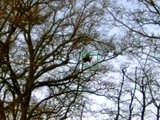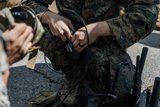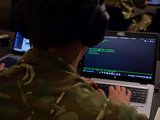US Navy launches nanosatellite
The US Navy has launched a nanosatellite, designed to extend the range of ultra-high frequency (UHF) communications into the polar regions, from Vandenberg Air Force Base in California.
The effort is part of the Integrated Communications Extension Capability (ICE-Cap), which aims to demonstrate the ability of low-Earth orbit satellites to extend the geographic coverage of the Mobile User Objective System (MUOS) and legacy UHF follow-on satellite constellations to the polar regions.
MUOS provides mobile forces with cell-phone-like capabilities via the Wideband Code Division Multiple Access waveform while also supporting the legacy UHF currently provided by the UFO satellites. Currently, four MUOS satellites with one on-orbit spare make up the constellation, providing UHF coverage between 65° north and 65° south latitude. The ICE-Cap satellite will act as a relay to the existing MUOS constellation and, based on its orbit, extend communications into the polar regions for mobile forces.
The ICE-Cap payload, a small 3U nanosatellite, was commercially launched aloing with a number of 1U nanosatellites measuring only 10cm per side. These smaller satellites will serve as calibration targets and technology demonstrators to improve tracking of small objects in space. These satellites will host different combinations of radio frequency reflectors that reflect radar for improved space object tracking and optical reflectors that reflect lasers for precise measurement of satellite altitude.
Nanosatellites have a 12- to 18-month design cycle and an expected lifespan of about three years, allowing for continuous technology insertion.
More from Digital Battlespace
-
![Chess Dynamics successfully demonstrates Vision4ce AI-driven tracker]()
Chess Dynamics successfully demonstrates Vision4ce AI-driven tracker
The Vision4ce Deep Embedded Feature Tracking (DEFT) technology software is designed to process video and images by blending traditional computer vision with artificial intelligence (AI) algorithms to present actionable information from complex environments.
-
![Wave Relay devices cleared for security use on commercial systems in industry trend]()
Wave Relay devices cleared for security use on commercial systems in industry trend
Persistent Systems has been cleared by National Security Agency (NSA) to transmit sensitive data on commercial networks. The devices are added to the NSA’s Commercial Solutions for Classified (CSfC) component list which also includes other companies’ products providing the same security.
-
![UK teases cyber spending boost in Strategic Defence Review ahead of “imminent” release]()
UK teases cyber spending boost in Strategic Defence Review ahead of “imminent” release
The release of the UK’s Strategic Defence Review (SDR) has been long promised as mid-year. It is possible it could be as early as 2 June although the UK Ministry of Defence (MoD) continues to play its cards close to its chest.
-
![Intelsat emphasises SATCOM resilience for SOF in contested domains (video)]()
Intelsat emphasises SATCOM resilience for SOF in contested domains (video)
Intelsat outlines how its multi-orbit SATCOM architecture is enhancing connectivity and resilience for special operations forces operating in degraded and contested environments.
-
![US Space Force’s next-generation missile warning system moves forward with $500 million in new contracts]()
US Space Force’s next-generation missile warning system moves forward with $500 million in new contracts
Next-Generation Overhead Persistent Infrared (Next-Gen OPIR) satellites are intended to provide early warning of missile launches from any location worldwide and new ground stations will result in expanded coverage of critical missile warning.
























